Types of Red Flowers – Do you find your raised garden bed remaining the same? Keep the heebie-jeebies of yours away! Simply add the gracefulness of the ground supported by a dimensional frame with the red flowers!
Regardless of your selection, from lovely Begonia to beauteous red rose, the types of red flowers eventually last bewitchingly.
Here is the list of red flowers you might read up for a little while:
1. Begonia
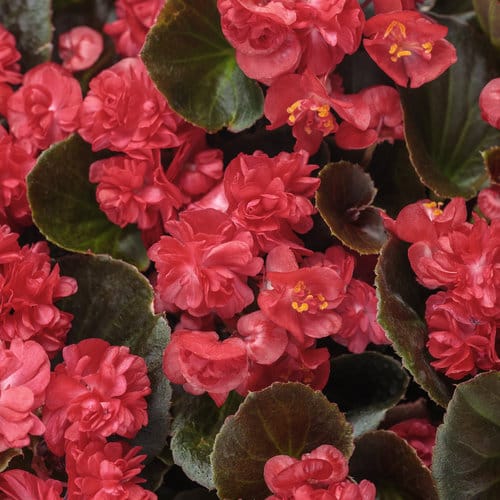
Begonia is a type of perennial that dwells in humid subtropical and tropical areas. Scattered across the southern part of Asia, the terrestrial herb holds unequally sided leaves of distinctive size.
The leaves of the species of Angel Wings even have the angel wing appearance. Cultivating Begonia has never been tough.
It requires a blend of sand and compost. Bear in mind that the short-lived plant can’t tolerate the intense sunlight.
2. Camellia
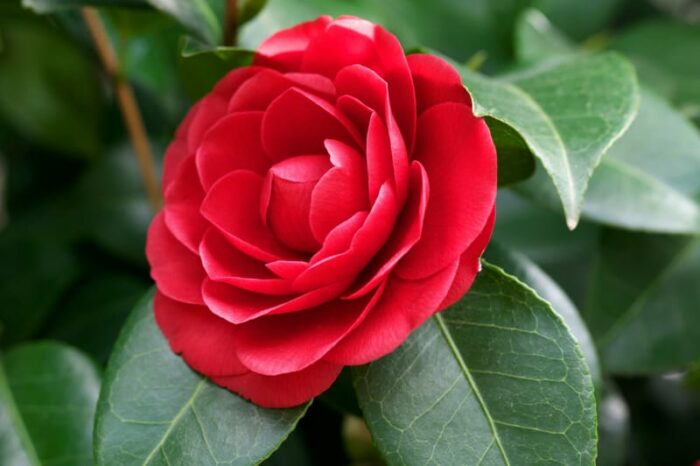
Camellia has expansive petals (from 5 to 9 pieces) with a dazzling variety of colors such as Fuschia, magenta, and ruby. The leaves of the evergreen shrub are pretty similar to the tea plant – they are glossy, jagged, and bushy.
While growing the flower, be sure to avoid the high calcium soils. The height does depend on the geographical condition and location. For the caring, it has needs of a large amount of water.
3. Red Anthurium
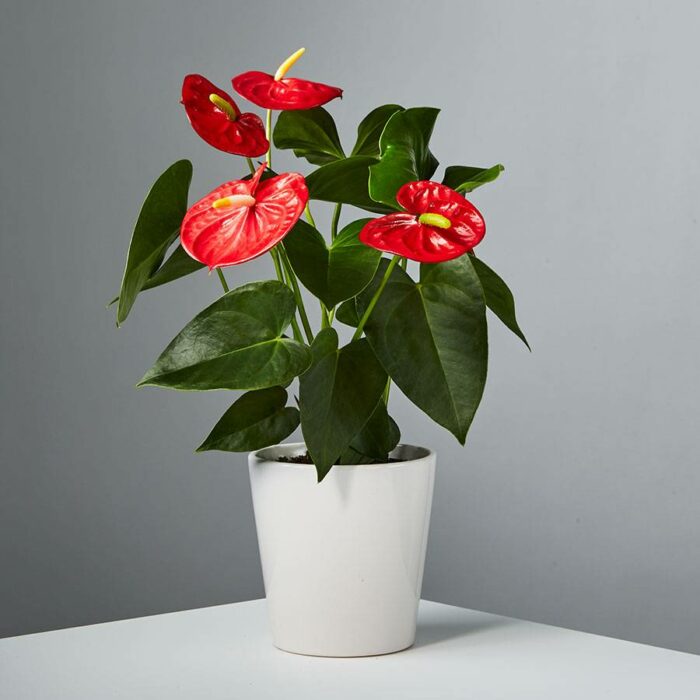
Red Anthurium is one of the inviting species that occupy other living plants as epiphytes – but some also live in the ground.
Classified as an inflorescence, the plant’s blossom, which comprises a male and female structure, is supported by a robust green stem.
The spike-shaped spadix and spathe are two significant parts of this kind of herb. The breeding can be carried out in two ways – cutting and seedling.
4. Dahlia
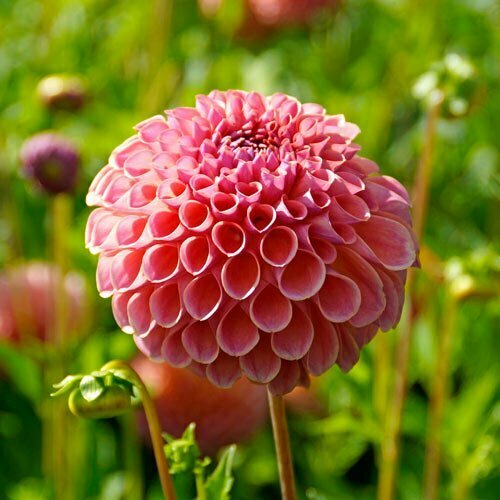
Although Dahlia doesn’t boast the specific scent to attract insects, the flower that becomes the national flower of Mexico has outstanding shade – it’s either brilliant or graceful.
One of the breeds of red and white flowers with spiky petals is compatible with your long garden bed.
To grow the annual bushy plant, you have to provide the least acidic soil. Covering up the growing medium with the mulch and sprouting totally is a bad idea.
5. Red Tulip
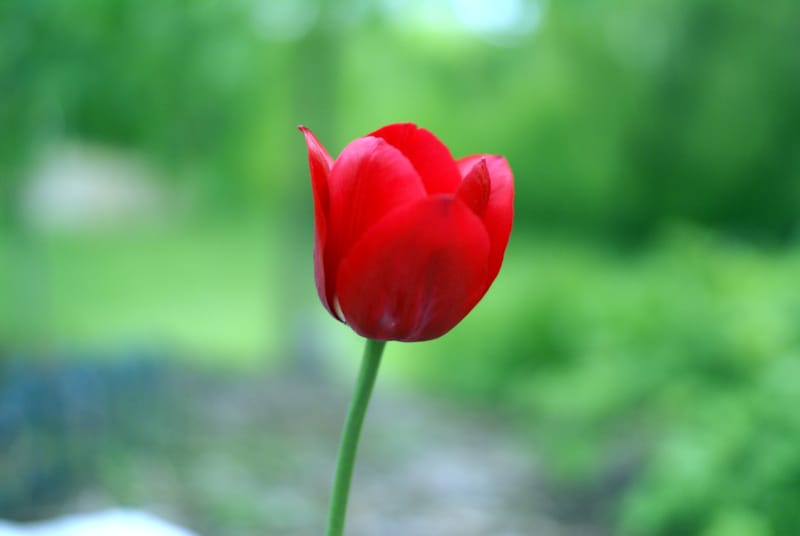
Red Tulip could be another cool variation when it comes to adding spice to your empty ground.
With the large petals, the cup-shaped flower that becomes the national flower of Hungary, without doubt, stuns the flower devotees from all over the world.
Keep in your mind that the big threat of Red Tulip is the fungus named Trichoderma viride.
6. Dianthus

The Dianthus flower appears more like a carnation yet with a smaller version. A bundle of red blossoms with petals elegantly jagged-edged is available in one spot in the plant.
The foliage, whose tint is bluish-grey, is normally flashy with the characteristic of being tapered and grass-like.
The center stage during the fresh spring can grow up to one meter tall. To anticipate the rot problem emerging from the stem, mind the dryness of the soil.
7. Primrose
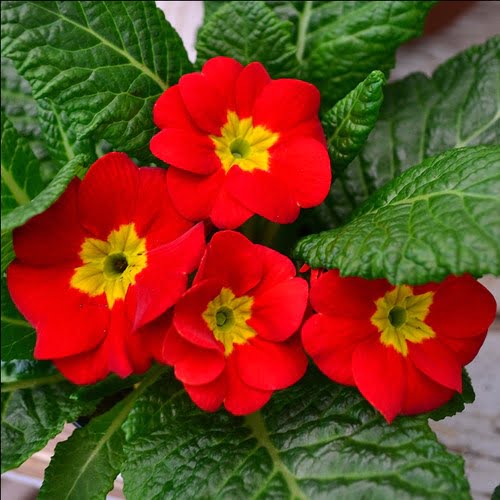
Primrose is a type of flowering perennial that wildly inhabits the open woods and shady areas. Out of other variations, the pink one can give rise to the timeless charm of your raised garden bed.
Although the shade of the petal surface is a bit pale, it is found to be interesting. No full sun is needed when it comes to growing Primrose. And make sure to make the humid yet well-drained soil available.
8. Gerbera Daisies
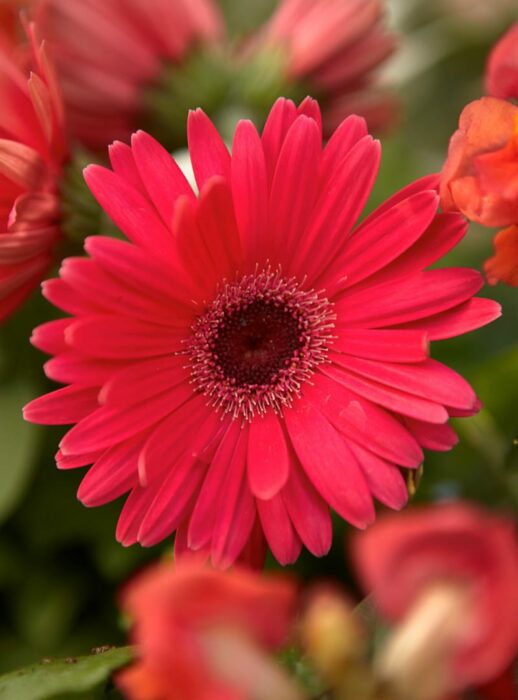
Don’t get mistaken once you sight the Gerbera Daisies! Yes, the showing is exactly the same as Daisy’s.
However, the size varying from 2 to 5 inches is somehow bigger, and the color is nothing but miscellaneous. From showy peach to blushing red, this kind always stuns your garden.
Apart from sowing the seedlings and growing them well, the key point to consider is caring. To diminish the risk of being affected by fungal diseases, it is vital that you water the plant in the morning.
9. Gloxinia

Gloxinia universally covers three types of species – Gloxinia perennis, Gloxinia erinoides, and Gloxinia xanthophylls. The first sort has minted-scent broad blossoms bowing down to the ground.
The second type found in Bolivia is frequently grown as a houseplant. The petals are dominated by the shade of maroon, and its smell feels like a coconut. Meanwhile, the last one appears a shrub with tiny, white blossom.
10. Red Spider Lily

Red Spider Lily, whose scientific name is Lycoris Radiata, definitely brings joy to your backyard. Native to Korea and China, the striking flower that belongs to the family of Amaryllidaceae appears as a bulbous perennial.
The arrangement of the narrow-shaped blossoms is irregular, and the projecting thin stamens are elongated.
11. Red Coneflower
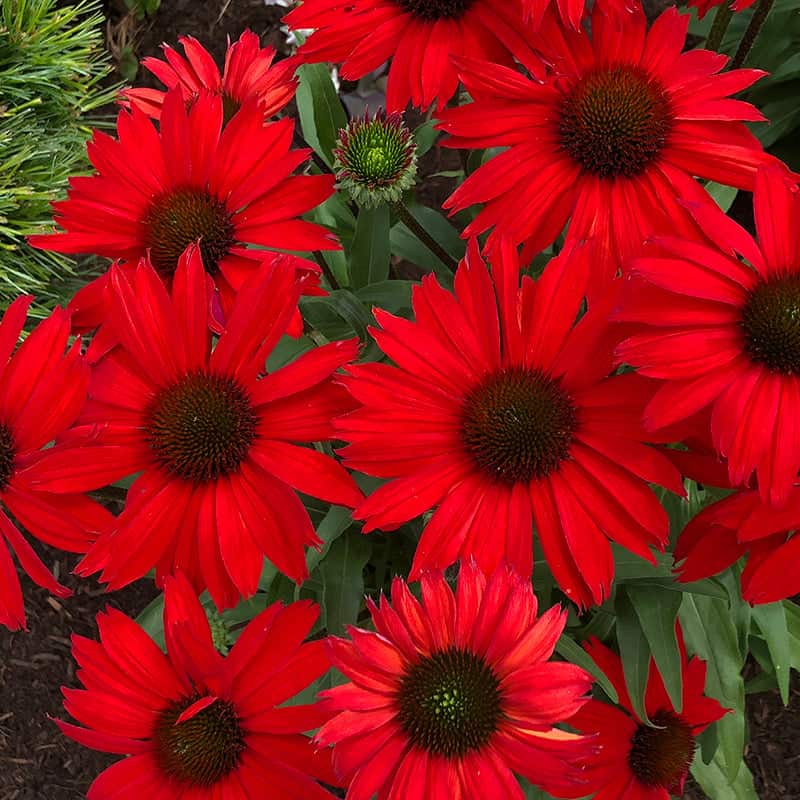
Red Coneflower, also known as Echinacea Salsa Red, is clearly characterized by blood-red petals making the butterflies and bees get attracted. The daisy-like flowering plant is relatively adaptive.
Unlike other dark red flowers vulnerable to temperate climate, this kind is tolerant to heat and drought. Simply water it regularly in order to let it progress.
12. Red Ranunculus
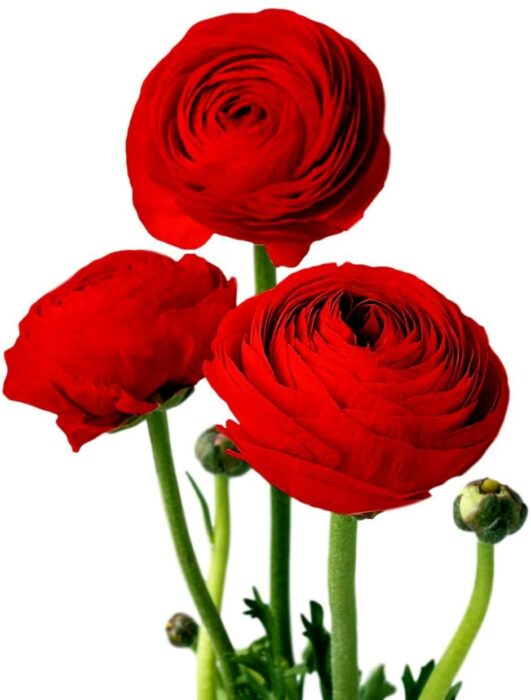
The public recognizes Red Ranunculus as Persian Buttercup, and the prepossessing flower is perfect to be grown both in a pot and a garden bed. The best time to cultivate the elegant Red Ranunculus is in the spring.
Regardless of the light, be it full sun or partial shade, the garden addition is able to survive well. Furthermore, it is deer resistant.
13. Hot Papaya Echinacea

The best description of Hot Papaya Echinacea is particularly a garnet-tint blossom with dropping tails. With the vibrant appearance, the visual impact of this perennial is able to tone up both your front yard and back yard.
The best time to cultivate this kind is the summertime. It indeed requires the full sun instead of the shady one. The blooming period can last up to four weeks even more.
14. Hyacinth
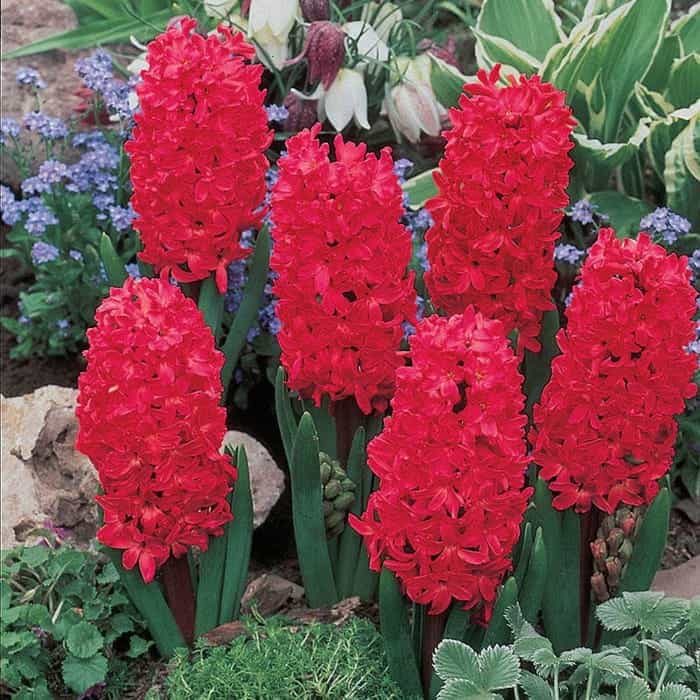
Growing from the bulbs, Hyacinth turns up an elegant lady that lends color to your rest of home area.
Originating from the eastern Mediterranean, this typical flower has thick petals which are widely spaced.
Its elongated, linear foliages emerge from the bulb with the number from 4 to six pieces. Looking after Hyacinth is quite effortless. Besides adequate sun exposure, moderate watering is another thing to take into consideration.
15. Peony
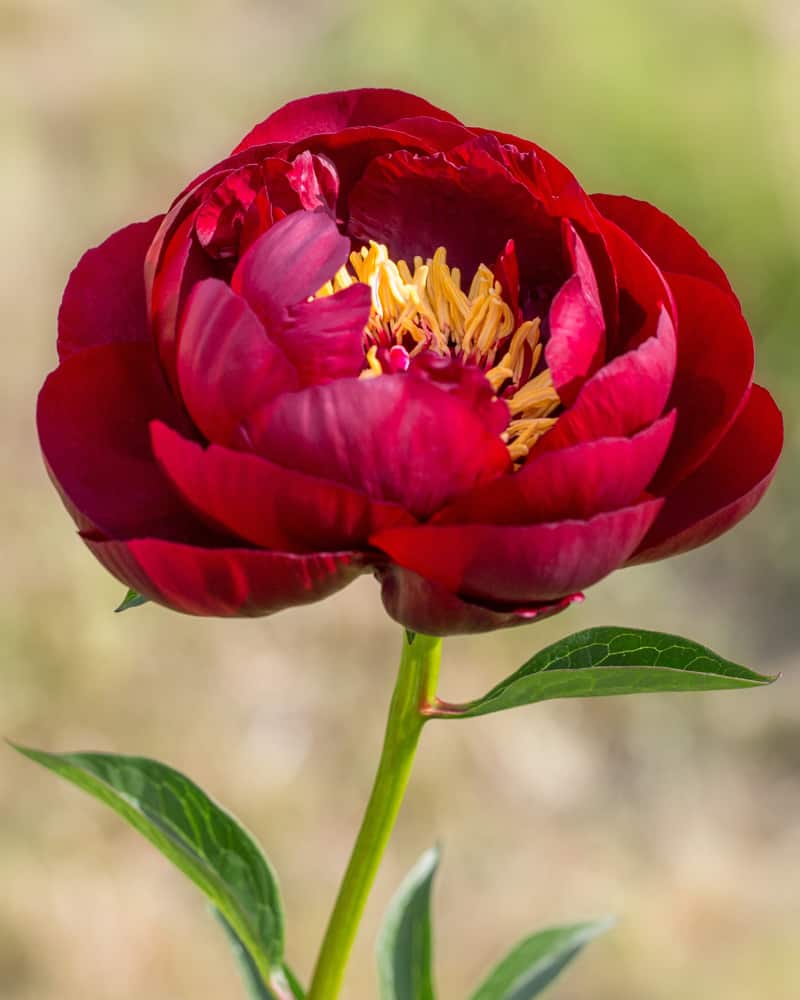
Be ready to take your breath away with Peony flowers when the summer is just before your eyes. This herbaceous perennial, with a height of 1 meter tall, features sweet-scented flowers with expansive petals.
With a good enough warm temperature, Peony can flourish very well. In addition to that, the plant necessitates soil with a neutral acidity level, and the same is true with the one that is rich in humus.
16. Poppy Flower

One of the exotic dark red flowers you need to take into account to add the garden’s exquisiteness should be Poppy Flower.
Don’t you know that the flowering plant is used to remember the victims of the war (specifically the soldiers)?
Poppy Flower has a short life. Even some species undergo the monocarpic phase letting them die after the blooming period. It is comprised of 4 to 6 petals and a lot of stamens.
17. Columbine
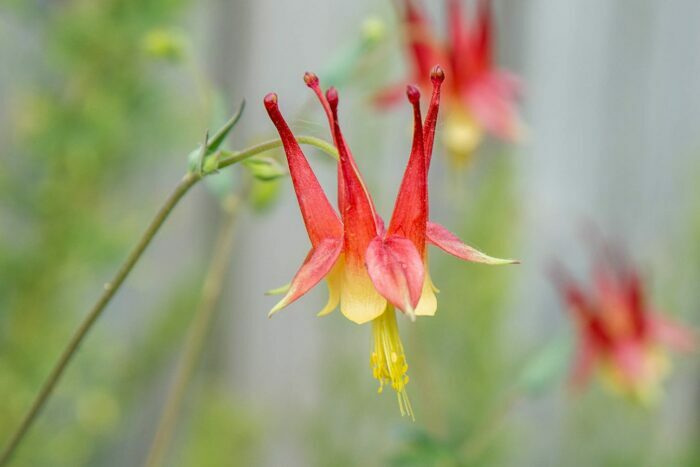
Generally speaking, Columbine is one of the types of red flowers easy to cultivate in the northern hemisphere. In the wildlife, the captivating perennial plant is found in woodlands and meadows.
What makes the floral creature is the flower’s shape which looks like a bell; it is no wonder that the hummingbirds love lingering near it. Columbine, in fact, doesn’t favor the scalding environment.
18. Red Calla Lily

Red Calla Lily is literally impeccable to be placed not only in the garden but also in the bordering field.
As a result, your hedgerow looks flamboyantly gorgeous. Despite the truth that it is not categorized as a lily, you always find it captivating.
The benefit of embellishing your outdoor with the lady is that it doesn’t entail serious attention.
19. Red Geranium
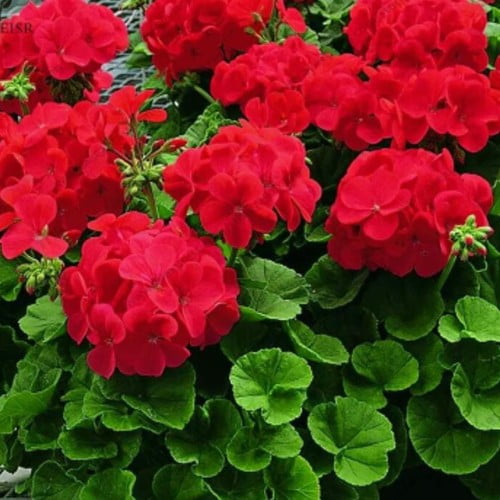
Another list of red flowers that have recently gained popularity is the Red Geranium. One stem can contain a bundle of flowers with bright red petals that look weak-kneed.
To get the most out of the blossoming process, the beautiful plant requires an abundance of light. For further attention, you need to supply a combination of soil, perlite, and peat.
20. Cosmos Flower
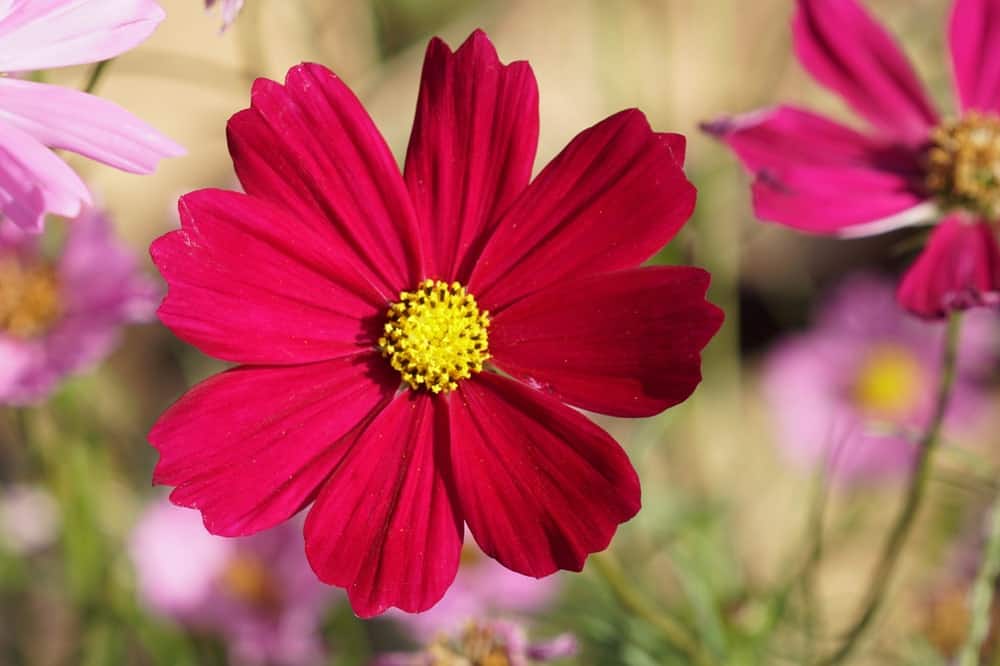
Belonging to the family of sunflowers, Cosmos Flower, native to Mexico, appeals to the people with its form.
The plant whose height is able to reach 2 meters comes with transparent taffy shade – some varieties are maroon and orange.
The dark green leaves are elongated and pinnate. The soil for its medium to grow must be humid and well-drained. Unlike other types of red flowers, Cosmos survives in warm weather.
21. Amaranthus Flower
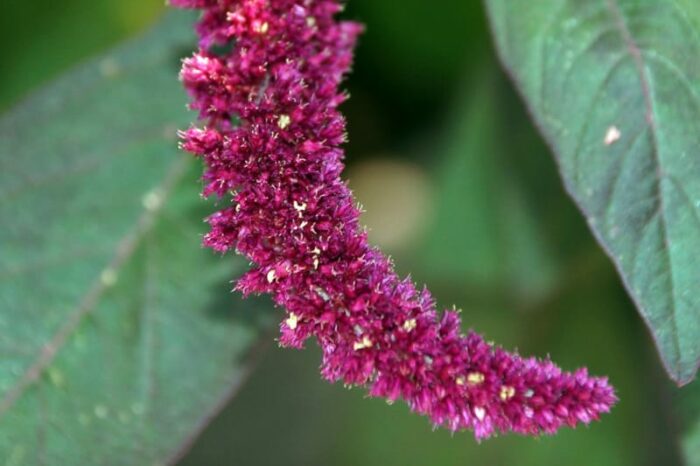
Amaranthus comes with a profusion of mentions. The red flower names include Tassel Flower, Kampala, Amaranth, and so on.
The beautiful plant native to the tropical region is characterized by the tassel-look flowers cascading down to the ground, making them extremely unique.
The height reaches up to 130 cm. The interesting fact of it is that not only is the species naturally decorative, but also it is edible.
22. Red Rose
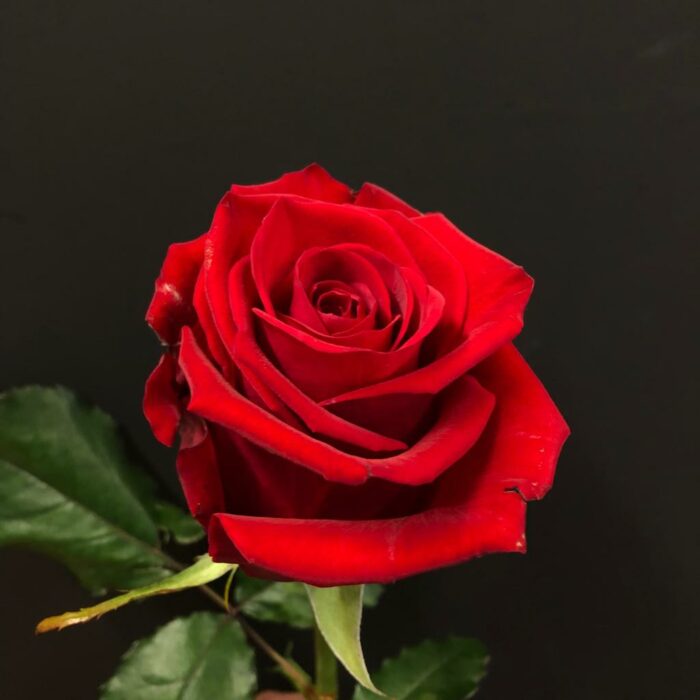
From ornamental to medical purposes, the sweet-scented Red Rose has been used for a number of decades. There are four to five segments of the corolla of the blossom with dark shade varying from current to lipstick.
In terms of adapting to the environment, the prickles are the inseparable parts. With regular watering and proper caring, the thorny plant exists healthily.
23. Red Sunflower
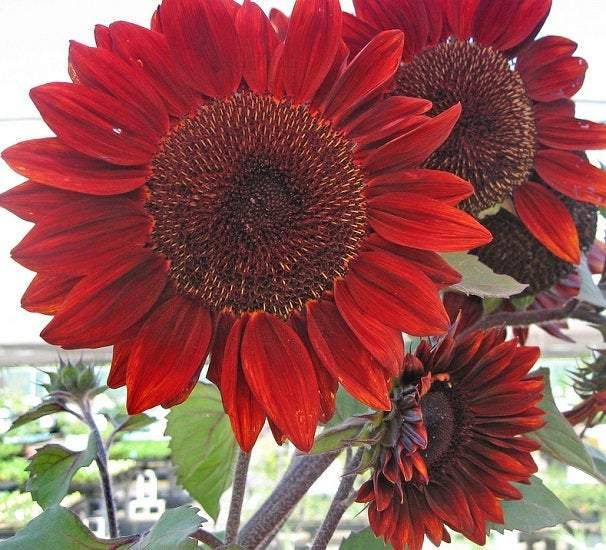
Why you need to choose the red sunflower since this sort literally stands out among other perennial plants in your raised garden bed. It has numerous varieties from Little Becka to Red Wave.
If you adore the velvety value and vigorous stem that Red Sunflower has to offer, you might not skip out the Moulin Rouge. Meanwhile, Chianti with its pollen-less characteristic remains tasteful.
24. Red Verbena

The grandeur and endless cultivated beauty of Red Verbena are no longer indisputable.
The summer’s limelight lifts the garden’s vibrancy to the upper level. It is greatly described as a set of conspicuous tiny blossoms with the shade of red blood and serrated foliages.
The right temperature for it to thrive ranges from 21 to 26 degrees Celsius by day. It is also resistant to a warm climate or heat.
25. Scabiosa
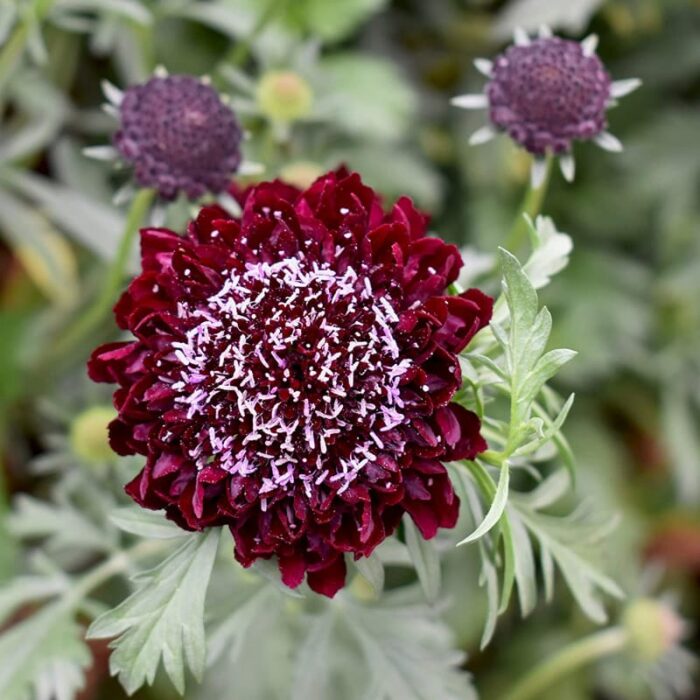
The graceful flowering plant which belongs to the family of Caprifoliaceae, consists of several heads. Interestingly, each head is loaded with a couple of small florets making Scabiosa likable.
Don’t you know that the tiny portions are covered up by the bract that comes with the saucer shape? As it is rich in nectar, a multiplicity of insects from moths to butterflies tends to approach and suck the flower.
26. Zinnia

What makes Zinnia flower out of the ordinary is no other than its solitary flower heads, which appear like the daisy kind. It turns out that the annual can bloom heavily and quickly as well, dotting your entire garden bed.
Zinnia requires not only the well-drained soil teeming with good organic materials but also the full sun. The mealybugs and powdery mildew remain the significant issues that the flower has to face.
27. Castor Bean
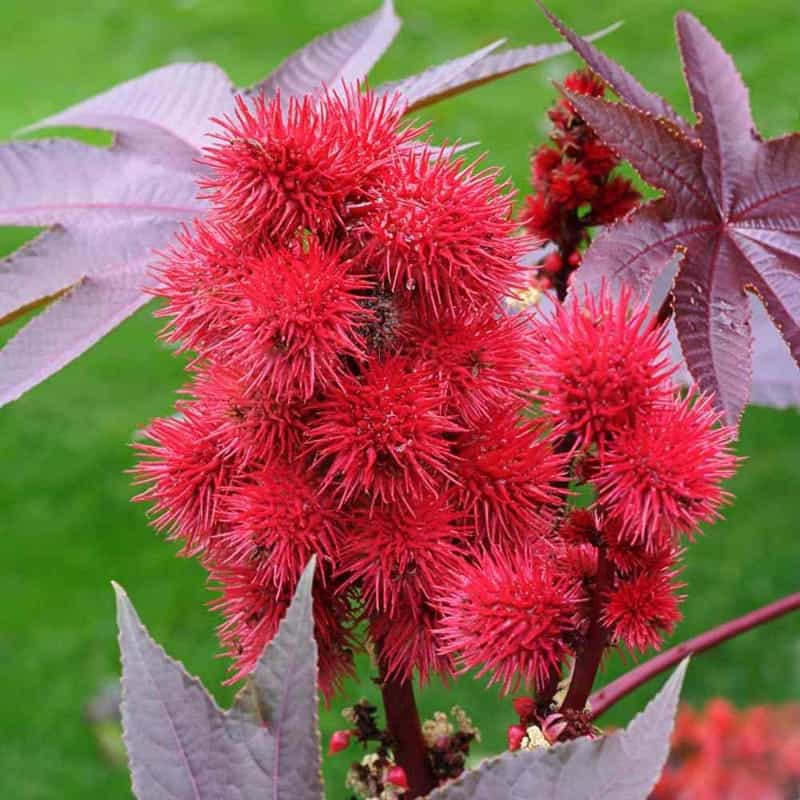
Ricinus comunis, better known as Castor Bean, is literally exceptional when it comes to ornamenting your raised bed garden. The highlight drawing the flower buffs’ attention is no other than the plant’s strange seed pods.
The shrub originating from Ethiopia loves occupying the river beds or the sides of road commonly damp. It has an erect, woody stem as well as showy wide palmate leaves shaped like a star. The flower bud has no petals.
All in all, those types of red flowers are the key reason why your raised garden bed looks lively and colorful.
 Jessica Paster The Future is Green
Jessica Paster The Future is Green